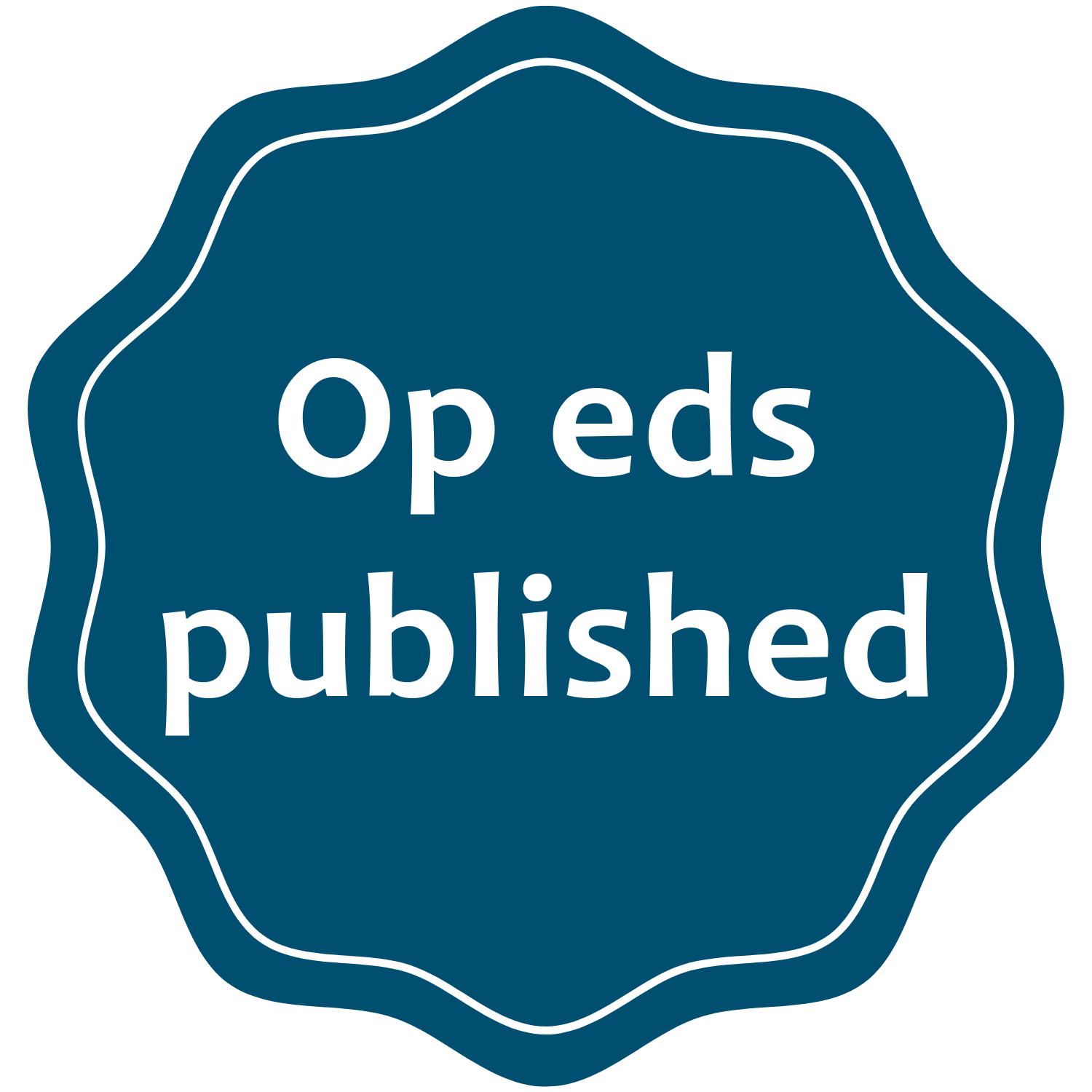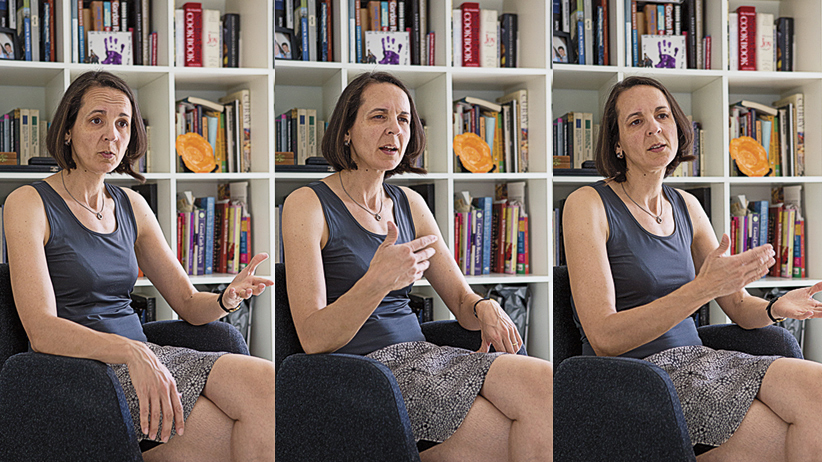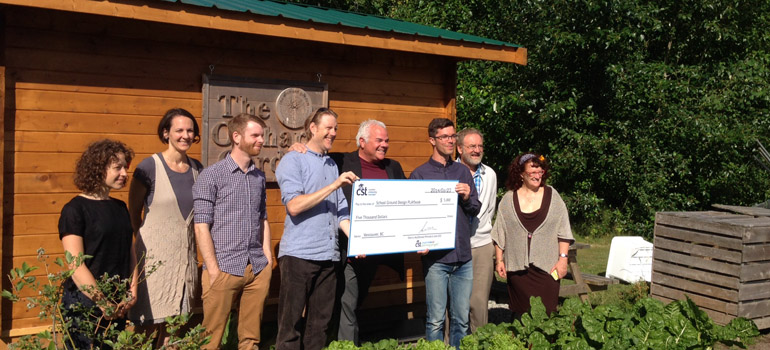
Media
The Lawson Foundation's 2016 AGM: Guest Speaker Presentation (Mariana Brussoni)
Parents & Child Injury Prevention
Mariana Brussoni, PhD is an Academic Scientist & Assistant Professor in the Department of Pediatrics at UBC. Her research focuses on understanding the mechanisms of injury risk for high risk populations and developing evidence based policies, programs and interventions that are relevant to their social, cultural and behavioural contexts.
Keeping Kids Safe: Fathers and Injury Prevention, Part 1.
Keeping Kids Safe: Dad's Role Dr. Mariana Brussoni discusses findings from ongoing research on fathers' attitudes to childhood injury prevention being conducted at the BC Injury and Prevention Unit. What is a father's role in keeping children safe?
Playing with Fire: How much risk should we expose our kids to?
Maclean's, June 21, 2015Print
URL: http://www.macleans.ca/society/life/playing-with-fire-how-much-risk-should-we-expose-our-kids-to/
Injury-prevention expert Mariana Brussoni on anxiety-based caregiving, risk-taking, and why unsupervised play teaches social skills
What is the relationship between outdoor time and physical activity, sedentary behaviour, and physical fitness in children? A systematic review
Published by International Journal of Environmental Research and Public Health
2015 The objective of this systematic review was to examine the relationship between outdoor time and: (1) physical activity, (2) cardiorespiratory fitness, (3) musculoskeletal fitness, (4) sedentary behaviour; or (5) motor skill development in children aged 3–12 years. We identified 28 relevant studies that were assessed for quality using the GRADE framework.
What is the relationship between risky outdoor play and health in children? A systematic review
Published by International Journal of Environmental Research and Public Health
June 9, 2015
Risky outdoor play has been associated with promoting children’s health and development, but also with injury and death. Risky outdoor play has diminished over time, concurrent with increasing concerns regarding child safety and emphasis on injury prevention. We sought to conduct a systematic review to examine the relationship between risky outdoor play and health in children, in order to inform the debate regarding its benefits and harms. We identified and evaluated 21 relevant papers for quality using the GRADE framework. Included articles addressed the effect on health indicators and behaviours from three types of risky play, as well as risky play supportive environments. The systematic review revealed overall positive effects of risky outdoor play on a variety of health indicators and behaviours, most commonly physical activity, but also social health and behaviours, injuries, and aggression. The review indicated the need for additional “good quality” studies; however, we note that even in the face of the generally exclusionary systematic review process, our findings support the promotion of risky outdoor play for healthy child development. These positive results with the marked reduction in risky outdoor play opportunities in recent generations indicate the need to encourage action to support children’s risky outdoor play opportunities. Policy and practice precedents and recommendations for action are discussed.
Risk of hospitalization due to unintentional fall injury in British Columbia, Canada, 1999-2008: Ecological associations with socioeconomic status, geographic place, and Aboriginal ethnicity
Published by Journal of Racial and Ethnic Health Disparities
June 28, 2016
Aboriginal people in British Columbia (BC), especially those residing on Indian reserves, have higher risk of unintentional fall injury than the general population. We test the hypothesis that the disparities are attributable to a combination of socioeconomic status, geographic place, and Aboriginal ethnicity. Our findings showed that Aboriginal ethnicity is not an independent risk marker: it modifies the effects of socioeconomic factors. Closing the gap in fall injury risk between the general and Aboriginal populations is likely achievable by closing the gaps in socioeconomic conditions.
URL: http://link.springer.com/article/10.1007%2Fs40615-016-0258-4
Play worth remembering: Are playgrounds too safe?
Published by Child, Youth and Environments
May 16, 2016
Research on children's outdoor play environments has found that safety has become the key driver of play space design, and that children's free play with natural elements has decreased with time. Adults reflecting upon their own childhood frequently recall playing on their own and in natural settings. In order to better understand the types of landscapes that people considered memorable for play and if these landscapes offered beneficial challenges, we asked participants in an online survey to recall their favorite outdoor play spaces and the elements contained in these spaces, to describe the benefits they received by playing in these places and to consider if they were safe play spaces. Of the 592 respondents, 69 percent found today's playgrounds too safe. When recollecting their own childhood, 59 percent of participants preferred natural play spaces, compared to 14 percent who preferred spaces designed specifically for play (like a traditional playground). The results suggest public support for rethinking the design of children's outdoor play spaces to include more challenging play opportunities, natural elements, and access to unstructured play areas.
URL: http://www.jstor.org/stable/10.7721/chilyoutenvi.26.1.0017
Position statement on active outdoor play
Published by International Journal of Environmental Research and Public Health
2015 A diverse, cross-sectorial group of partners, stakeholders and researchers, collaborated to develop an evidence-informed Position Statement on active outdoor play for children aged 3–12 years. The Position Statement was created in response to practitioner, academic, legal, insurance and public debate, dialogue and disagreement on the relative benefits and harms of active (including risky) outdoor play.
Injury risk in British Columbia, Canada: Are Aboriginal children and youth over-represented?
Published by Injury Epidemiology
2015 Children and youth worldwide are at high risk of injury resulting in morbidity, disability or mortality. Disparities in risk exist between and within countries, and by sex and ethnicity. Our aim is to contribute data on disparities of injury rates for Aboriginal children and youth compared with those of the general population in British Columbia (BC), Canada, by examining risks for the two populations, utilizing provincial administrative data over a 24-year period.
URL: http://injepijournal.springeropen.com/articles/10.1186/s40621-015-0039-2
An evaluation of evidence-based pediatric injury prevention policies in Canada
Published by BMC Public Health
2015 Policies to reduce injury among Canadians can be controversial and there is variability in the enactment of injury prevention laws across the country. In general, laws are most effective when they are based on good research evidence, supported by widespread public awareness and education, and maintained by consistent enforcement strategies.
URL: http://bmcpublichealth.biomedcentral.com/articles/10.1186/s12889-015-1986-9
Beyond physical activity: The importance of play and nature-based play spaces for children’s health and development
Published by Current Obesity Reports
2015 The reduction of child obesity continues to be a challenge worldwide. Research indicates that playing outdoors, particularly in natural play spaces, boosts children’s physical activity, potentially decreasing childhood obesity. We present evidence that natural play spaces also provide for more diverse forms of play for children of varying ages and competencies.
URL: http://link.springer.com/article/10.1007/s13679-015-0179-2
Biography
Dr. Mariana Brussoni is an Associate Professor in the Department of Pediatrics and the School of Population and Public Health at the University of British Columbia. She is a scientist with the Child and Family Research Institute and the BC Injury Research & Prevention Unit. Brussoni is also a board member of the Child & Nature Alliance of Canada. Trained as a developmental psychologist, Brussoni investigates child injury prevention. Current research interests include the influence of geographic, cultural and social places on parenting related to risk and safety; developmental importance of children’s risky play; the impact of injury on children’s health related quality of life; injuries in Aboriginal populations; and, injury surveillance.
Recognition/Reconnaissance
Salary Award | Professional
Child & Family Research Institute
Salary Award | Professional
Child & Family Research Institute
Scholar Award | Professional
Michael Smith Foundation for Health Research
Peter Wall Research Mentorship Award | Professional
Peter Wall Institute for Advanced Studies, University of British Columbia
Category Champion Award | Professional
CST Inspired Minds Learning Project
Additional Titles and Affiliations
Investigator British Columbia Children's Hospital
Associate Professor Department of Pediatrics University of British Columbia
Associate Professor School of Population and Public Health University of British Columbia
Academic Scientist BC Injury Research & Prevention Unit
Research Grants
The State of Play: Socio-ecological perspectives on children’s outdoor play
Organization: Canadian Institutes of Health ResearchDate: January 1, 2015
Grant amount: $846,725
Details:
Principal Investigator
Play worth remembering: Gaining public insights into memories of outdoor play spaces
Organization: Peter Wall Institute for Advanced StudiesDate: January 1, 2013
Grant amount: $10,000
Details:
Co-Principal Investigators: Mariana Brussoni & Susan Herrington
Risky play meets nature play: The influence of outdoor play spaces and risky play on child development
Organization: UBC Hampton FundDate: January 1, 2013
Grant amount: $40,000
Details:
Co-Principal Investigators: Mariana Brussoni & Susan Herrington
Go play outside! Reframing risk to promote children’s outdoor play
Organization: Lawson FoundationDate: December 1, 2015
Grant amount: $170,000
Details:
Principal Investigator
More information: http://lawson.ca/outdoorplay
Canadian fathering and child unintentional injury prevention
Organization: Canadian Institutes of Health ResearchDate: January 1, 2011
Grant amount: $351,54
Details:
Principal Investigator
Canadian Hospitals Injury Reporting and Prevention Program
Organization: Public Health Agency of CanadaDate: January 1, 2015
Grant amount: $130,298
Details:
Principal Investigator



